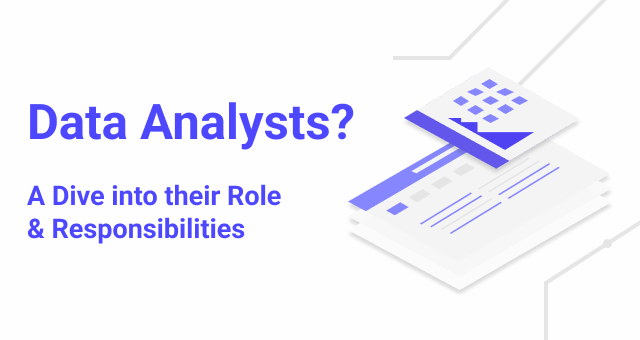In today’s data-driven world, businesses of all sizes are relying on data analysts to help them make better-informed decisions. But what exactly is a data analyst, and what do they do? In this article, we’ll explore the world of data analysts, their main responsibilities and tasks, the skills they need, and the tools and technologies they use.
What is a Data Analyst?
A data analyst is a professional who uses data to identify patterns, trends, and insights that can help businesses make better decisions. Data analysts collect, process, and perform statistical analyses on large sets of data to identify insights that can help businesses make informed decisions.
What Does a Data Analyst Do?
A data analyst’s primary role is to collect and analyze data to identify trends and insights. They use various techniques and tools to clean and transform data, perform statistical analyses, and create visualizations to help stakeholders understand the insights.
Main Data Analyst Responsibilities, Duties & Tasks
The main responsibilities and duties of a data analyst include:
- Collecting and cleaning data: Data analysts need to collect data from various sources, including databases, APIs, and spreadsheets. They must also clean the data to ensure that it is accurate and free of errors.
- Analyzing data: Once the data is clean, data analysts can perform statistical analyses to identify patterns and insights. They use various techniques, including regression analysis, clustering, and machine learning.
- Creating visualizations: Data analysts must create visualizations, such as graphs and charts, to help stakeholders understand the insights.
- Communicating insights: Data analysts must communicate their findings to stakeholders, including executives, managers, and other team members. They need to explain the insights in simple, easy-to-understand terms and provide recommendations for action.
Data Analyst Skills
- Data analysis: Experience in collecting, processing, and analyzing data.
- Statistics: Strong understanding of statistics and statistical techniques.
- Programming: Experience in programming languages such as SQL, Python, and R.
- Data visualization: Experience in creating visualizations, such as graphs and charts.
- Communication: Excellent communication skills to explain insights to stakeholders.
Tech Stack & Tools for Data Analyst
Data analysts use a variety of tools and technologies to perform their tasks. Here are some of the most popular tools and technologies used by data analysts:
- Data storage and processing: Tools such as SQL, MongoDB, and Hadoop are used to store and process data.
- Statistical analysis: Data analysts use tools such as Python, R, and SAS to perform statistical analyses.
- Data visualization: Data analysts use tools such as Tableau, Power BI, and D3.js to create visualizations.
Data analysts play a critical role in helping businesses make informed decisions. They collect and analyze data, identify patterns and insights, and communicate their findings to stakeholders.
Successful data analysts need a combination of technical and soft skills, including data analysis, statistics, programming, data visualization, and communication skills. Also they need to be proficient in various tools and technologies, including SQL, Python, R, Tableau, and Power BI.
By understanding the role of a data analyst and the skills and tools they need, you can find the right professional to help your business make data-driven decisions.

